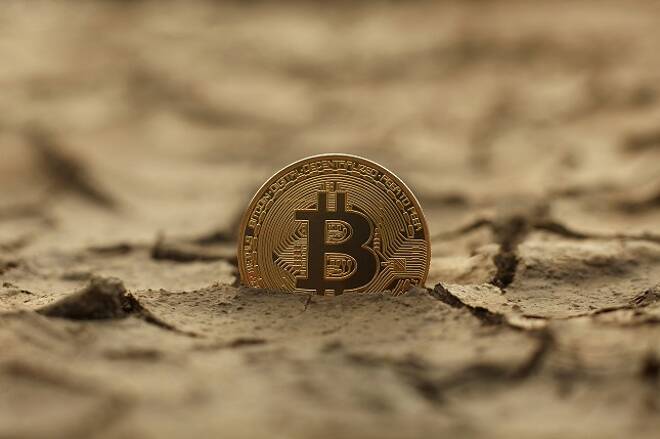Advertisement
Advertisement
Bitcoin – It’s a Great Time to Be a Bear, with $3,000 the Next Target
By:
This meltdown has got legs, with another 3% slide in Bitcoin in the early hours raising the prospects of another painful day ahead.
Another broad based cryptomarket sell-off saw Bitcoin fall by 7.11% on Tuesday, following on from Monday’s 13.05% slide, to end the day at $4,571.
A positive start to the day saw Bitcoin rise through to $5,000 levels and an early morning intraday high $5,056.3, falling well short of the first major resistance level at $5,435.13, before hitting reverse.
Bitcoin tracked the broader market through the morning, sliding through the first major support level at $4,630.63 and second major support level at $4,340.57 to an intraday low and new swing lo $4,303.5 before finding support.
A late morning rebound saw Bitcoin make another move through to $5,000 levels with an afternoon high $5,021, though the bearish sentiment across the broader market and strong resistance at $5,000 through the day ultimately weighed, with Bitcoin sliding back to $4,500 levels.
For the Bitcoin bulls, it could be a long winter, with Bitcoin’s market cap sliding to $76.57bn, quite a fall from grace when considering Bitcoin’s $333.43bn high back in December of last year.
For the broader market, the market rout has seen the total market cap slide from a $220.52bn to $143.72bn in November alone, the current market cap sitting at levels not seen since last September.
While the downward trend has hit all the majors, some of been impacted more heavily than others, with Ripple’s XRP continuing to hold onto the recently attained number 2 spot by market cap, Ethereum’s sizeable losses holding the market cap gap at just shy of $4bn.
Perhaps of greater significance has been the demise of Bitcoin Cash, which now has a more viable blockchain tech in the form of Stellar’s Lumen hot on its tail, Bitcoin SV’s slide from last week’s $130 levels to a Tuesday intraday low $35.93 and Bitcoin ABC’s slide from last week’s $290 high to this week’s $182.3 low materially impacting sentiment, the hard fork having failed to inspire.
The cryptomarket meltdown has even led to the U.S DoJ reportedly launching an investigation into the 2017 Bitcoin rally and whether price manipulation had driven the rally with the use of Tether.
While it’s early days, the news is yet another blow for those looking for the SEC to approve the 9 Bitcoin ETFs that were submitted and originally declined, with price manipulation having been one of the key areas of concern for the SEC.
There’s certainly reason to pause as the investigation progresses and investors have yet another reason to fret over the near-term, the list of key risk drivers over the next 6-8 months getting ever longer.
One silver lining could be the fact that the latest sell-off has demonstrated the cryptomarket’s lack of influence on global financial market stability, while some other questions have also been answered including whether Bitcoin is the new gold.
Looking across at the broader global financial markets, this week’s 3.73% slide in the Dow Jones will be quite a reversal from a major index perspective that would traditionally drive demand for the safe havens. Over the first 2-days of this week, Bitcoin has tumbled by 19%, while gold is down just 0.14%.
October may have demonstrated some safe haven properties, with the low volatility environment, but the lack of volume and latest sell-off are yet more reasons to park the cash under the mattress if Bitcoin is the only other option.
How much further Bitcoin has to go before the investors can expect a rebound remains to be seen, but $3,000 now looks to be the bears’ next target and if that doesn’t get the talk of bubbles brewing, nothing will.
At the time of writing, Bitcoin was down 3.01% to $4,433.4, with an early morning low $4,412.3 managing to hold above the day’s first major support level at $4,230.9, though it may just be a matter of time.
About the Author
Bob Masonauthor
With over 28 years of experience in the financial industry, Bob has worked with various global rating agencies and multinational banks. Currently he is covering currencies, commodities, alternative asset classes and global equities, focusing mostly on European and Asian markets.
Advertisement
